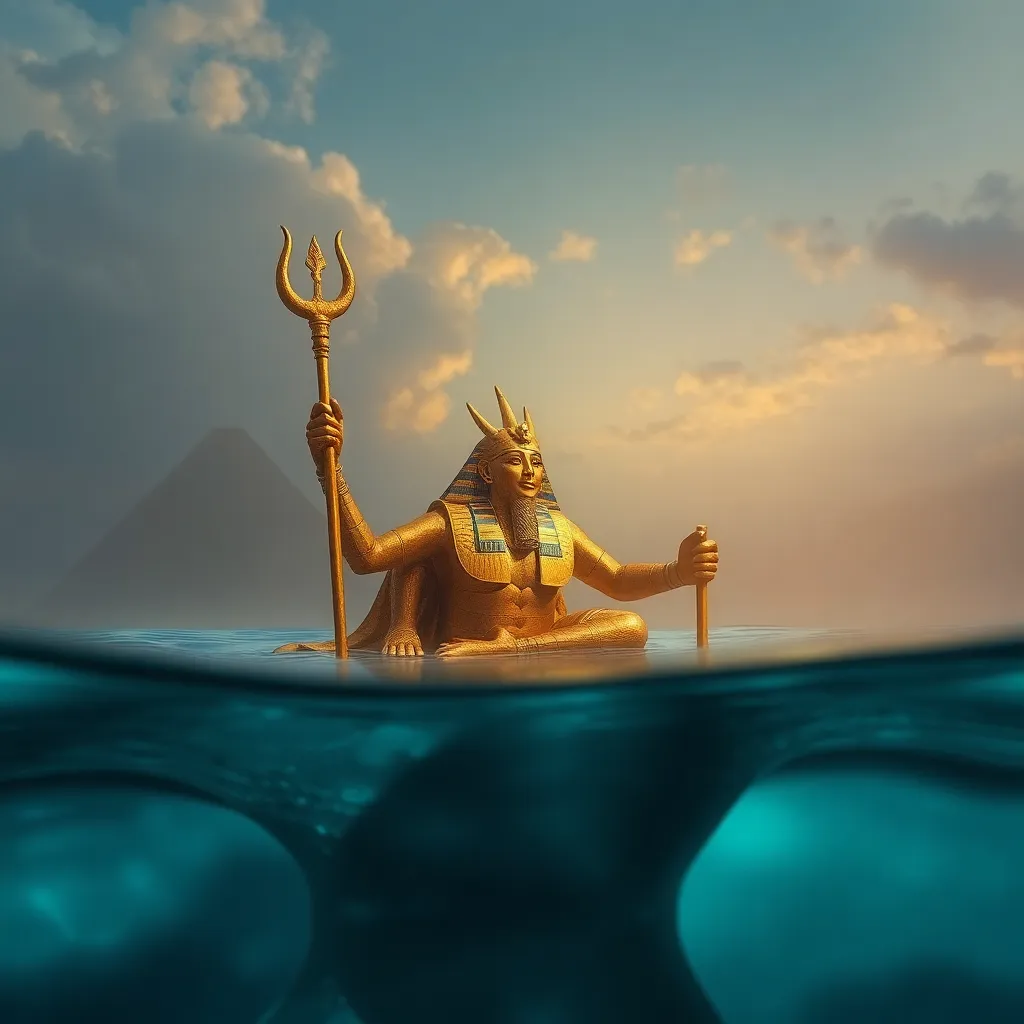The Role of the God Khnum: Shaping Life from the Waters
I. Introduction
In ancient Egyptian mythology, Khnum holds a significant place as a creator god, intricately linked to the life-giving force of water. Known primarily as the god of the inundation, he symbolizes the fertility and sustenance provided by the Nile River. Understanding Khnum’s role is essential for comprehending how ancient Egyptians viewed their environment and the divine interplay that governed their lives.
Water was crucial to the survival of ancient Egyptian civilization, facilitating agriculture, sustaining communities, and embodying the essence of life itself. This article aims to explore the multifaceted nature of Khnum, delving into his origins, attributes, and enduring legacy within both ancient and modern contexts.
II. The Origins of Khnum
Khnum’s origins can be traced back to the early dynastic period of Egypt, where he is depicted in various forms in art and inscriptions. Initially worshipped in Aswan, Khnum was revered as a god of the Nile and a guardian of the waters.
Mythologically, Khnum is often associated with the creation narratives of ancient Egypt. He is described as fashioning humans from clay along the banks of the Nile, highlighting his role as a divine craftsman. Various texts and inscriptions articulate these narratives, underscoring Khnum’s importance in the pantheon of Egyptian deities.
III. Khnum’s Attributes and Symbolism
Khnum is typically depicted as a man with the head of a ram, symbolizing strength and fertility. His imagery often includes:
- Holding a potter’s wheel, indicating his role as a craftsman.
- Creating humans and animals from clay, showcasing his creative power.
The symbolism of water associated with Khnum is profound. In a desert landscape, the Nile was seen as a divine gift, bringing life and nourishment. Khnum’s connection to the Nile River exemplifies the importance of this waterway as a source of sustenance and a symbol of renewal. The annual flooding of the Nile, known as the inundation, was celebrated as a miraculous event that rejuvenated the land.
IV. Khnum as the Creator God
Khnum’s most significant role in mythology is as a creator god. He is credited with the creation of humanity, shaping individuals from the clay of the Nile. This act of creation emphasizes the divine craftsmanship that is central to his identity. Ancient Egyptians viewed Khnum not only as a goddess of water but also as an artist who meticulously crafted each person, granting them life and purpose.
The significance of clay and pottery in Khnum’s mythology cannot be overstated. Clay, a fundamental material in ancient Egypt, symbolizes both creation and the earth itself. Khnum’s association with pottery suggests a deeper connection to the idea of fertility and the cycle of life.
V. Khnum’s Role in Agriculture and Sustenance
Khnum played a crucial role in agriculture, particularly in relation to irrigation and farming practices. The successful cultivation of crops was paramount for the survival of ancient Egyptian society, and Khnum was revered as a protector and benefactor of agricultural endeavors.
The seasonal flooding of the Nile, which deposited nutrient-rich silt on the land, was seen as a direct blessing from Khnum. Farmers would pray for his favor to ensure bountiful harvests. Rituals and offerings were commonly made to Khnum to secure his blessing for the agricultural cycles, linking his divine power to the sustenance of the people.
VI. Khnum in Egyptian Religion and Culture
Khnum was widely worshipped across ancient Egypt, with numerous temples dedicated to him, particularly in the city of Esna. These temples served as centers for worship and community gatherings, where rituals and offerings were made to honor the god.
His influence extended to other deities in the Egyptian pantheon, often intertwining with narratives of creation and fertility. Festivals celebrating Khnum were held, where the community would come together to pay homage to the god who shaped their very existence.
VII. Legacy of Khnum in Ancient and Modern Contexts
Khnum’s legacy endures in both ancient and modern contexts. His imagery and themes have influenced Egyptian art, depicting the crucial relationship between water and life. Statues, carvings, and paintings often showcase Khnum’s attributes, reflecting the reverence held for him throughout history.
In contemporary discussions, Khnum’s attributes resonate with current concerns about water conservation and sustainability. The challenges faced by modern society regarding water resources echo the ancient Egyptians’ respect for this elemental force. Khnum’s legacy serves as a reminder of the importance of water and the need to preserve it for future generations.
VIII. Conclusion
In summary, Khnum represents a pivotal figure in ancient Egyptian mythology, embodying the life-giving properties of water and the divine craftsmanship involved in creation. His significance extends beyond the religious and cultural realms, reflecting the ancient Egyptians’ profound respect for nature and its resources.
As we reflect on the interplay between mythology and the natural world, Khnum stands as a testament to the enduring relationship between humanity and the environment. Preserving the legacy of Khnum involves recognizing the vital importance of water in sustaining life, both in ancient Egypt and in our modern world.




